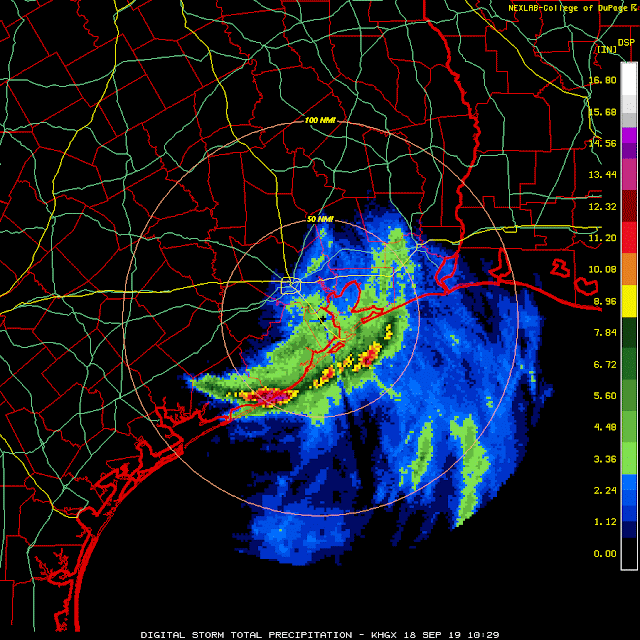Tropical Storm Karen is now closing in on Puerto Rico, Tropical Storm Jerry is a little bit closer to Bermuda, and Tropical Storm Lorenzo is nearly a hurricane out by Cabo Verde.
Karen was briefly downgraded to a depression on Monday night, but has regained tropical storm status and is now centered just 80 miles south of Puerto Rico and moving to the north at 7 mph. As of this post, heavy rain has not reached the island, but will later today, as will tropical storm force winds. There are long, updating radar loops at
http://bmcnoldy.rsmas.miami.edu/tropics/radar/
Since the winds won't be too strong, the biggest concern by far is the rain, and the resulting flash flooding and mudslides. Areas to the right of the storm track could see some minor storm surge, as well as the gustiest winds from the circulation and an elevated tornado threat. These maps show the outlook for the four hurricane hazards (heavy rain, wind, storm surge, and tornadoes) as of Tuesday morning:
Beyond today's encounter with Puerto Rico, the forecast gets abnormally complicated. Although the NHC is bound to making a single track forecast and drawing the same "cone" around it that gets drawn around every other storm and forecast all year, the uncertainty is definitely larger than average historical track errors would indicate.
A long list of unknowns is the reason for this, such as its proximity to Jerry, its interaction with Puerto Rico, its sensitivity to wind shear, its sensitivity to dry air, and the strength and position of a building subtropical ridge. A stronger storm is deeper and is steered by different layers of the atmosphere than a weak storm. Although the
latest NHC forecast shows a northward motion through Friday followed by a sharp left turn and westward motion during the weekend, model guidance is all over the place. This map shows forecast tracks from NHC (thick red line with red dot) as well as three hurricane models, three global models, two global model ensembles, three global model ensemble means, and a couple that are a consensus of some of the others. It's the dreaded "squashed spider".
So for now, consider Puerto Rico and the Virgin Islands as the places at risk from Karen... everyone else just relax and wait a bit longer to see what's going on.
Jerry is a highly-asymmetric tropical cyclone with barely any thunderstorm activity near the center, and deteriorating quickly -- but it is bringing periodic strong rainbands to Bermuda. As of 8am EDT today, the peak sustained winds are 60 mph and tropical storm force winds should reach Bermuda by early Wednesday morning. It's headed north at 8 mph and is expected to make a turn to the northeast later today, bringing the center near or over Bermuda on Wednesday afternoon. There are also radar loops from Bermuda at
http://bmcnoldy.rsmas.miami.edu/tropics/radar/
And much further east, Tropical Storm Lorenzo looks like it's rapidly on its way to becoming the season's 5th hurricane and most likely the 3rd major hurricane in a few days. It passed well south of Cabo Verde on Monday, and model guidance is in agreement on a turn toward the north this weekend that will keep it very far away from any land.





 In the far eastern Atlantic, Lorenzo has rapidly intensified to become the season's 3rd major hurricane (Category 3+), with peak sustained winds of 125 mph as of 6am EDT -- just yesterday morning it was at 80 mph. It will almost certainly keep going into Category 4 status, and could even reach Category 5 intensity (160+ mph) at some point. Only about 2% of Atlantic named storms ever achieve Category 5 status, so don't hold your breath.
In the far eastern Atlantic, Lorenzo has rapidly intensified to become the season's 3rd major hurricane (Category 3+), with peak sustained winds of 125 mph as of 6am EDT -- just yesterday morning it was at 80 mph. It will almost certainly keep going into Category 4 status, and could even reach Category 5 intensity (160+ mph) at some point. Only about 2% of Atlantic named storms ever achieve Category 5 status, so don't hold your breath.












































